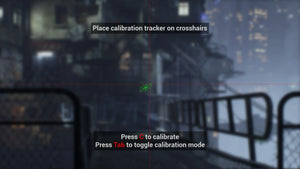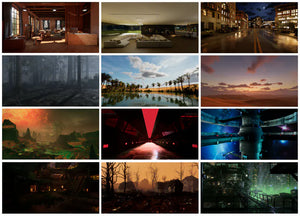LED Display for Film Studio Optimization: Revolutionizing Modern Filmmaking

The film industry stands at a technological crossroads where traditional production methods meet cutting-edge innovation. Modern studios face mounting pressure to deliver high-quality content faster and more cost-effectively than ever before. Enter LED display technology – a game-changing solution that transforms how filmmakers approach virtual production, set design, and creative storytelling.
LED walls have evolved from simple background displays to sophisticated production workflow improvement systems that create photorealistic environments in real-time. This revolutionary approach enables directors to capture final footage with in-camera effects, reducing post-production time and costs while providing actors with immersive environments that enhance their performances.
The shift toward LED-based virtual production represents more than just technological advancement – it's a fundamental reimagining of how films are made. Studios worldwide are recognizing that LED display for film production offers unprecedented creative control, cost savings, and operational flexibility that traditional green screen and location shooting simply cannot match.
Understanding LED Display Technology in Film Production
LED technology has transformed from basic lighting solutions to sophisticated display systems capable of creating believable virtual environments. Modern filmmaking technology utilizes high-resolution LED panels that can display dynamic backgrounds, lighting effects, and interactive elements that respond to camera movements and actor positions in real-time.
The foundation of LED display systems lies in their ability to create consistent, controllable lighting conditions that match the virtual environments being displayed. Unlike traditional green screens that require extensive post-production work, LED walls provide natural lighting that reflects onto actors and props, creating realistic interactions between digital and physical elements.
Contemporary LED displays feature pixel pitches as small as 1.2mm, delivering crystal-clear imagery that maintains quality even in close-up shots. The technology supports high dynamic range (HDR) content, wide color gamuts, and high refresh rates that prevent flickering and moiré patterns when filmed with professional cameras.
The Revolution of Virtual Production Studios
Virtual production has redefined what's possible in modern filmmaking. Leading studios are constructing dedicated LED volume stages – enclosed environments surrounded by LED walls that create 360-degree immersive backgrounds. These facilities enable filmmakers to shoot in any location imaginable without leaving the studio.
The technology behind virtual production combines LED displays with real-time rendering engines, motion tracking systems, and advanced camera tracking technology. This integration allows the background imagery to shift perspective as the camera moves, maintaining proper parallax and depth perception that creates convincing virtual environments.
Major film studios have reported significant cost savings and creative benefits from virtual production. Productions that previously required expensive location shoots, extensive travel, and complex post-production workflows can now be completed entirely within controlled studio environments while maintaining photorealistic quality.
Top LED Display Solutions for Film Studios
1. ARWALL - Leading Virtual Production Innovation
ARWALL stands at the forefront of film studio optimization with their cutting-edge LED display solutions designed specifically for professional film production. Their systems feature ultra-high resolution displays, advanced color accuracy, and seamless integration with industry-standard virtual production workflows.
The company's LED solutions support real-time rendering capabilities, camera tracking integration, and custom content creation tools that enable filmmakers to create stunning virtual environments. ARWALL's technology has been adopted by major studios worldwide for both feature films and episodic content production.
2. Industrial Light & Magic StageCraft
ILM's StageCraft technology revolutionized virtual production with their work on "The Mandalorian" series. Their LED volume stages combine massive LED walls with sophisticated tracking systems to create immersive virtual environments that respond to camera movements in real-time.
3. Sony Crystal LED
Sony's Crystal LED technology offers exceptional color accuracy and brightness levels suitable for professional film production. Their modular display systems can be configured for various studio sizes and production requirements.
4. Samsung The Wall for Studios
Samsung's The Wall technology provides seamless, bezel-free displays that can be configured into custom sizes and shapes. Their studio solutions feature high brightness levels and color accuracy optimized for camera capture.
5. Absen LED Film Solutions
Absen specializes in fine-pitch LED displays designed for broadcast and film applications. Their products feature excellent color reproduction and camera-friendly refresh rates that prevent artifacts during filming.
Benefits of LED Display Integration in Film Studios
Enhanced Creative Control
LED displays provide filmmakers with unprecedented creative control over lighting and environment. Directors can adjust background imagery, lighting conditions, and atmospheric effects in real-time during filming, enabling immediate creative decisions without waiting for post-production.
Cost Reduction and Efficiency
Virtual production using LED displays eliminates many traditional production costs. Location scouting, travel expenses, weather delays, and extensive post-production work are significantly reduced. Studios can shoot multiple "locations" in a single day without moving equipment or crew.
Improved Actor Performance
Actors perform better when they can see and react to their environment rather than imagining it against a green screen. LED displays provide visual context that helps actors deliver more authentic performances while reducing the need for extensive direction about imaginary elements.
Accelerated Production Schedules
LED-based virtual production enables faster turnaround times from concept to final footage. Real-time rendering and in-camera effects reduce post-production timelines, allowing studios to meet tight deadlines and market demands more effectively.
Technical Advantages
Modern LED displays offer superior color accuracy, brightness control, and resolution that green screens cannot match. The technology provides natural reflections and lighting that enhance the realism of virtual environments while reducing the technical complexity of post-production compositing.
Implementation Strategies for Film Studio Optimization
Planning Your LED Display Installation
Successful LED display implementation requires careful planning of studio space, technical infrastructure, and workflow integration. Studios must consider ceiling height, viewing angles, cable management, and cooling requirements when designing LED volume stages.
The installation process typically involves creating a curved or cylindrical LED wall configuration that provides immersive coverage without visible seams. Proper calibration ensures color accuracy and brightness uniformity across all display panels.
Technical Infrastructure Requirements
LED display systems require robust technical infrastructure including high-bandwidth networking, powerful real-time rendering computers, and precise camera tracking systems. Studios must invest in backup power systems and redundant display controllers to ensure reliable operation during critical filming periods.
Staff Training and Workflow Adaptation
Successful LED display implementation requires training for directors, cinematographers, and technical staff. New workflows must be developed for content creation, real-time rendering, and troubleshooting to maximize the technology's potential.
Future Trends in LED Display Technology
Resolution and Pixel Density Improvements
Future LED displays will feature even smaller pixel pitches and higher resolutions, enabling close-up filming without visible pixel structure. Micro-LED technology promises further improvements in color accuracy and power efficiency.
Interactive and Responsive Environments
Developing LED systems will integrate with artificial intelligence and machine learning to create responsive environments that automatically adjust based on scene content, actor movements, and directorial preferences.
Extended Reality Integration
LED displays are evolving toward full extended reality (XR) integration, combining virtual elements with augmented reality overlays and mixed reality interactions that further blur the line between digital and physical production elements.
Sustainability and Energy Efficiency
Future LED display technology will focus on reduced power consumption and sustainable manufacturing practices, making virtual production more environmentally friendly while maintaining superior image quality.
Cost Considerations and Return on Investment
Initial Investment Analysis
LED display systems represent a significant initial investment, but studios must consider long-term cost savings from reduced location shooting, decreased post-production requirements, and increased production efficiency. Many studios report full cost recovery within two to three major productions.
Operational Cost Benefits
LED-based virtual production reduces ongoing costs including travel expenses, location fees, weather-related delays, and extensive post-production work. Studios can produce more content with existing resources while maintaining or improving quality standards.
Revenue Generation Opportunities
Studios with LED display capabilities can rent their facilities to other productions, creating additional revenue streams. The technology also enables faster content creation, allowing studios to take on more projects and increase overall profitability.

Conclusion
LED display technology represents a fundamental shift in how films are produced, offering studios unprecedented creative control, cost savings, and production efficiency. The integration of LED walls into film production workflows enables faster turnaround times, enhanced creative possibilities, and improved production quality while reducing traditional filming constraints.
Studios that embrace LED display technology position themselves at the forefront of modern filmmaking, capable of producing high-quality content more efficiently and cost-effectively than traditional methods allow. As the technology continues advancing, LED displays will become increasingly essential for competitive film production.
The future of filmmaking lies in the seamless integration of digital and physical elements, with LED display technology serving as the bridge between virtual creativity and tangible production reality. Studios that invest in these systems today will be well-positioned to meet the evolving demands of modern content creation while maintaining creative excellence.
Frequently Asked Questions
Q: What are the main advantages of LED displays over green screens in film production?
A: LED displays offer several key advantages including natural lighting reflections on actors and props, real-time visual feedback for performers, reduced post-production requirements, and the ability to capture final footage in-camera. Unlike green screens, LED displays provide immediate visual context that improves actor performances and reduces the need for extensive compositing work.
Q: How much does it cost to install LED display systems in a film studio?
A: LED display installation costs vary significantly based on studio size, display resolution, and technical requirements. Basic setups can start around $500,000, while large-scale LED volume stages may cost several million dollars. However, many studios report cost recovery within 2-3 major productions due to reduced location shooting and post-production expenses.
Q: What technical requirements are needed for LED display film production?
A: LED display systems require high-bandwidth networking infrastructure, powerful real-time rendering computers, precise camera tracking systems, and specialized software for content creation and display management. Studios also need adequate power distribution, cooling systems, and backup equipment to ensure reliable operation during filming.
Q: Can LED displays work with existing film equipment and cameras?
A: Modern LED displays are designed to work with professional film cameras and existing studio equipment. However, proper calibration is essential to match refresh rates, prevent flickering, and ensure color accuracy. Most professional cameras can be configured to work effectively with LED display technology through proper settings and synchronization.
Q: How do LED displays impact actor performances compared to traditional green screen work?
A: Actors typically perform better with LED displays because they can see and react to their virtual environment in real-time rather than imagining it. This visual context helps actors deliver more natural performances and reduces the need for extensive direction about imaginary elements. The realistic lighting from LED displays also helps actors feel more immersed in their virtual surroundings.
Q: What types of content can be displayed on LED walls during film production?
A: LED displays can show virtually any type of visual content including photorealistic environments, abstract backgrounds, moving imagery, interactive elements, and dynamic lighting effects. Content can be pre-rendered or generated in real-time, and can respond to camera movements and actor positions to maintain proper perspective and parallax effects.
Q: How does LED display technology affect post-production workflows?
A: LED displays significantly reduce post-production requirements by providing in-camera effects and natural lighting interactions. This reduction in compositing work, rotoscoping, and color correction can cut post-production time by 30-50% while improving the overall quality of the final footage. However, studios still need expertise in content creation and real-time rendering for optimal results.





